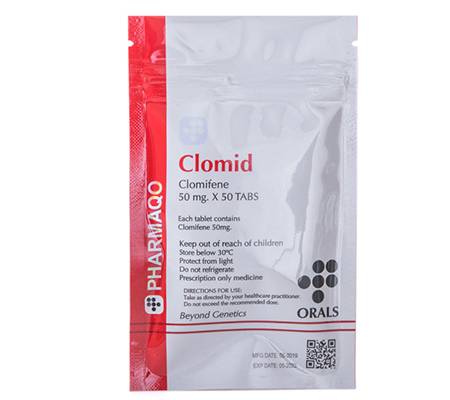PCT:
To understand why there is a real need for a post-cycle therapy steroid, let us first talk
about what happens when you take in synthetic steroids.
When you take in something (either orally, intramuscularly, or whatever is the possible
route) the body reacts. The human body has a way of finding homeostasis, the property
of an organism to regulate and maintain stable and ideal internal condition. This unique
ability is exhibited when synthetic substances, such as steroids, are introduced in the
body.
When the body 'feels' it does not need extra androgens, it finds ways to fight off the
invasion – the first pass metabolism kicks off, conversion of testosterone to DHT, etc.
And sometimes when the body cannot cope with the changes, it goes haywire and
negative side effects take place. Anomalies occur – masculinization of female users
(hirsutism, deepening of voice, growth of Adam's apple, etc.), and feminization of male
users (gynecomastia, testicular shrinkage, etc).
And there is always the problem of cessation of the natural testosterone production in
the body, How does this happen?
Take a vacation – that's what synthetic steroids tell your naturally occurring
testosterone. The message is short and simple, but quite effective because the
testosterones just sort of disappear as the body, or to be more specific the body's
hypothalamic-pituitary-testicular axis (HPTA), stops producing them. Now, as long as
the synthetic steroids are there in the system, you're OK, for there are 'workers' that do
what should be done. The problem arises when you stop a cycle because endogenous
testosterone will not be there immediately to replace the temps, so to speak. So there is
now a void or a gap; and, if you do not do something about it ASAP everything will just
go haywire because you now have low levels of androgens but normal levels of
corticosteroids and possible high levels of estrogen.
This imbalance, in a way, can create chaos in as far as your gains while you're coming
off a cycle. Since corticosteroids (cortisols) and estrogen are both catabolic agents and,
if they outnumber the anabolic agents (androgens), chances are you're going to lose
most, if not all, of your muscle mass gains. Thus, there is an immediate need to
compensate for the void. Otherwise, the body enters a catabolic state. This is
something experienced by many.
This imbalance between testosterone and estrogen can be a huge obstacle in restoring
HPTA function.
So in a nutshell, Post-Cycle Therapy can be defined then as a regimen adapted by
steroid users after completion of an anabolic or prohormone cycle to avoid hormonal
chaos, or what steroid users call a post-cycle crash.
More on Cortisol and Estrogen
As mentioned above, the catabolic state is induced by this imbalanced ratio – low levels
of testosterone and high levels of cortisol and estrogen. Why does this imbalance
occur? Again, we go back to the balancing act of the body (homeostasis). When
synthetic steroids are introduced into the body, the body reacts by converting some of
the androgens into estrogens because it 'feels' that it does not need the excess
androgens. Once steroid intake is stopped, there are the 'newly-converted' estrogens
free flowing in the bloodstream.
Cortisol, the other partner of the catabolism team, is an adrenal hormone that is
secreted when the body is under physical or physiological stress, thus it is sometimes
called the stress hormone. Now, ingesting or injecting steroids is, in a way, putting the
body through stress. Once cortisol is secreted, the next process is breakdown of muscle
proteins; a process which frees amino acids into the bloodstream, the so-called building
blocks of protein, to compensate for the stress.
If the body is not stopped in this balancing act, there is the possibility – huge possibility
– of losing the gains, or crashing big time.
PCT's Pros and Cons:
When to administer PCT?
There is no direct answer to that question as it really depends on the type of steroids
you have used during the cycle. In the case of compounds with long-acting esters, the
waiting period is longer for obvious reasons. Inversely, with shorter-acting compounds
the waiting period is shorter as it takes relatively little time for the system to be cleared
of the drugs.
For cycles including Deca or EQ, 2-3 weeks of wait time is standard. For cycles of
shorter ester compounds like Testosterone Propionate and Trenbolone Acetate, 3 days
after the last shot is enough of a wait time.
How long should PCT last?
The general practice is about four to six weeks. Depending on your body's own ability to
recover after a cycle.
Does everyone need a PCT?
Yes, PCT is required for several reasons. If an individual wants to hold on to whatever
she/he gained during a cycle, PCT is a must. PCT is also needed in the occurrence of
post-steroid hypogonadism as well as for cleansing the liver from steroid metabolites.
The clenasing process is necessary to prepare the liver for another cycle.
What are the drugs to be used during PCT?
Different drugs are being used by different individuals in their PCT. However, the usual
drugs present in a PCT include HCG, and selective estrogen receptor modulators
(SERMS) such as Nolvadex and Clomid, as well as aromatase inhibitors.




